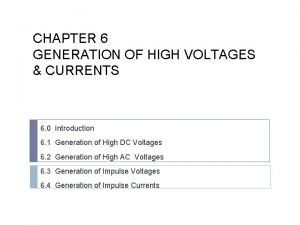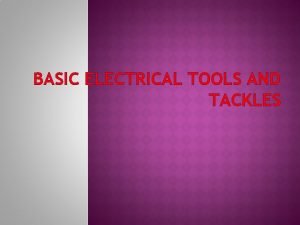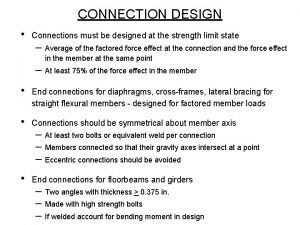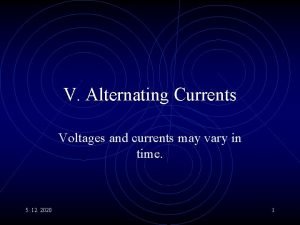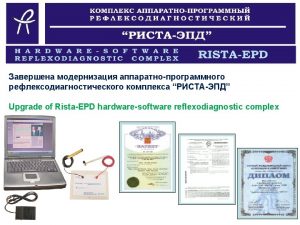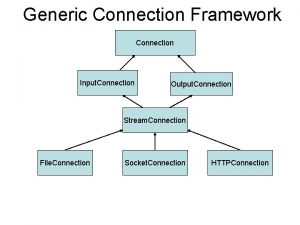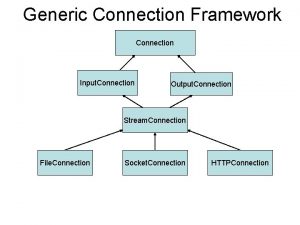Voltages and Currents in Y connection Fig 1










- Slides: 10

Voltages and Currents in Y connection

Fig: 1

• Consider the circuit of a typical star connection shown above. • The voltage induced in each winding is the phase voltage. This is denoted by ER, EY and EB. • The current which flows through each winding is called the phase current. • The voltage available between any pair of terminals is called the line voltage. This is indicated by VRY, VYB, VBR. • The current which flows through the line is called the line current.

• In Fig: 1 shown , there are two phase windings between each pair of terminals. • The instantaneous value of potential difference between any two terminals is the arithmetic difference of the appropriate two phase emf’s. • The vector diagram of the emf’s and currents is also shown in Fig: 1. The load is considered to be of lagging nature. Hence the current in each phase lags the voltages by an angle Ø. • The system considered above is a balanced system. There fore all the phase voltages are equal by magnitude and will be denoted by Eph.

Calculation of Line and Phase voltages • From the above vector diagram we can understand that • The potential difference between line 1 and 2 is VRY=ER-EY. • In order to find VRY, we have to find the resultant of ER and EY reversed. • This is found by the resultant of the vectors which is given by the diagonal of the parallelogram.

Fig: 2 vector resultant of the phase voltages to find line voltages.

Calculation of Line and Phase voltages •

• Important points regarding Y connection

Line Currents and Phase currents • In Fig: 1, it is seen that each line is in series with the individual phase winding. • The line current in each line is the same as the phase winding to which the line is connected. • Therefore in Y connection

Power in Y connection • The total active power will be the sum of the three phase powers. • Total active power =3 xphase power. =3 x. Vph. x. Iphx. CosØ • But In terms of the line values, the expression for power becomes
 Fig.2
Fig.2 What is a deep current
What is a deep current Connections in literature
Connections in literature Generation of high voltage and current
Generation of high voltage and current Common electrical hand tools operate at voltages
Common electrical hand tools operate at voltages Slip critical connection vs bearing connection
Slip critical connection vs bearing connection A307 bolt shear strength
A307 bolt shear strength Slip critical connection vs bearing connection
Slip critical connection vs bearing connection No man eat fruit of the hereafter forever
No man eat fruit of the hereafter forever My father and the fig tree analysis
My father and the fig tree analysis Ocean currents waves and tides
Ocean currents waves and tides



